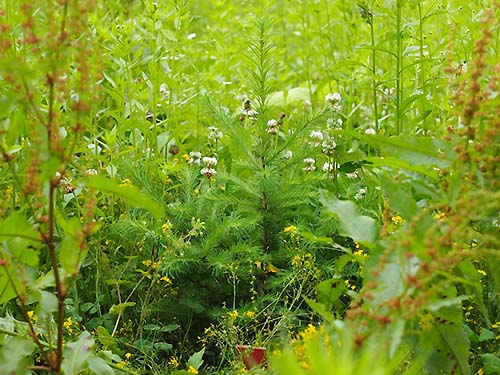Home > Research > Research Results > Research Results 2019 > Implementation criteria for weeding in Japanese larch (Larix kaempferi) plantations based on a scientific analysis
Update:May 21, 2019
Main content starts here.
Implementation criteria for weeding in Japanese larch (Larix kaempferi) plantations based on a scientific analysis
| Article title |
Effects of Weed Competition on the Survival and Initial Growth of Planted Seedlings of Japanese Larch (Larix kaempferi) |
|---|---|
| Author (affiliation) |
Hisanori Harayama(a), Ikutaro Tsuyama(a), Shigeo Kuramoto(b), Akira Uemura(c), Mitsutoshi Kitao(a), Qingmin Han(c), Takeshi Yamada(a), Shozo Sasaki(a) (a) Hokkaido Research Center, FFPRI, Sapporo, Hokkaido, Japan. (b) Department of Forest Vegetation, FFPRI, Tsukuba, Ibaraki, Japan. (c) Department of Plant Ecology, FFPRI, Tsukuba, Ibaraki, Japan. |
| Publication Journal | Journal of the Japanese Forest Society, 100(5):158-164. October 2018 DOI:10.4005/jjfs.100.158( External link ) |
| Content introduction |
Weeding is an important operation for removing vegetation that has flourished around the planted seedlings in the plantation and promoting the steady growth of the planted trees. However, the weeding cost is extremely high, and weeding, which should be done in summer, is extremely grueling for forest workers. Therefore, there is a growing need for saving labor for weeding. When vegetation flourish overtakes or covers planted trees (Picture 1), whether implementing weeding has been empirically and instinctively determined without significant support of scientific evidence. Japanese larch (Larix kaempferi) is a major afforestation species in the cool-temperate region in Japan. To provide decision criteria for weeding based on scientific evidence, we statistically analyzed the relationship between the extent of vegetation flourish coverage and the survival rate and growth of planted seedlings. The results indicated that the survival rate (Figure 1), tree height, and tree diameter significantly reduced when vegetation flourish covered more than 75% of the crown of the planted Japanese larch. Regarding the effects of vegetation on planted trees, there was no significant difference between bamboo and herbaceous plants. Planting large-sized, rather than small-sized, seedlings was more effective in saving the labor required for weeding. This study clarifies the decision criteria for implementing weeding in the Japanese larch plantation. In addition, this statistical model helps foresters to determine whether weeding is necessary.
Picture 1. Japanese larch (Larix kaempferi) covered by vegetation flourish (approximately 75%).
|
Copyright © Forest Research and Management Organization. All rights reserved.


